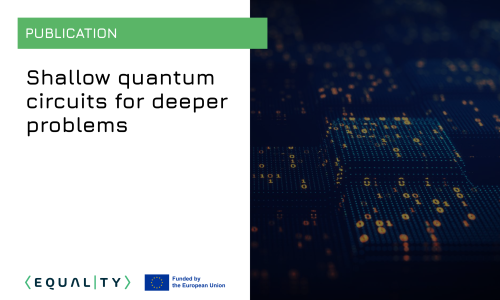

Quantum computers have dramatically improved during recent years. Despite that, they are still far from fault-tolerant computation. A number of limitations is yet to be overcome, including limited number of qubits, decoherence and gate errors. Many strategies have been developed to mitigate these issues and reach practical quantum advantages.
For instance, to directly combat size limits and reduce qubit number requirements to accessible quantities, techniques based on circuit cutting have been increasingly studied. Inspired by qubit-circuit-cutting, a question remains understudied: can a circuit be cut in depth? Or, more generally, to what extent can shallower circuits be used to tackle deeper quantum computations?
In this work, EQUALITY partners from Leiden University and collaborators investigate to what extent it is possible to mimic the performance of a deeper quantum computation by using a shallower device many times. The group proposes a method inspired by the Feynman quantum circuit simulation approach, where the circuit is cut and measured early on, and other circuits are run based on the outcomes.
This method is inefficient if applied in a straightforward manner due to the high number of possible outcomes. To mitigate this issue, the authors propose a shallow variational circuit, whose purpose is to maintain the complexity of the method within predefined tolerable limits and provide an optimization method to find such a circuit. The composition of these components of the methods is called “reduce&chop.” This approach works for certain cases of interest, and the authors believe their work may stimulate new research towards exploiting the potential of shallow quantum computers.
Read the paper: https://doi.org/10.1103/PhysRevA.108.062423
